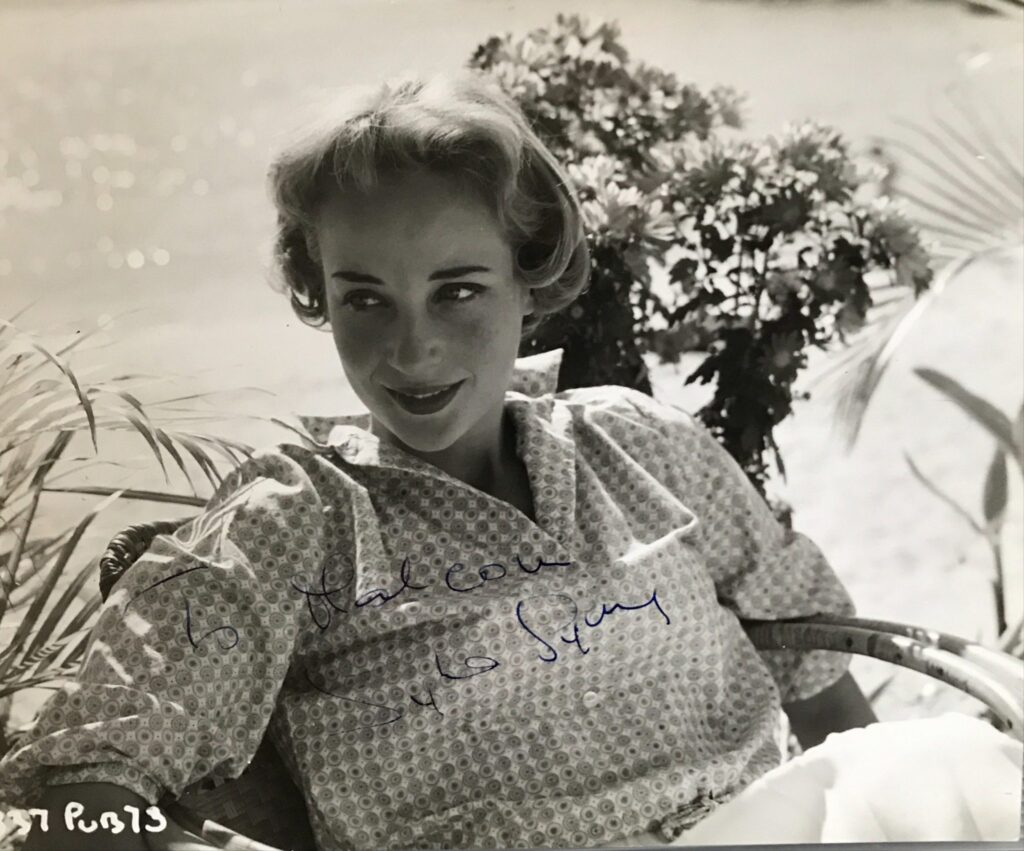
It was her portrayal of a Second World War nurse in Ice Cold in Alex (1958) that elevated Sylvia Syms to the top rank of British actresses.
Starring John Mills and Anthony Quayle and shot in the Libyan desert, she recalled it as the toughest assignment of her career. “There were holes in the ground instead of proper lavatories and we used DDT fly repellent as hairspray. I’m amazed we didn’t all die,” she recalled. “But my co-stars were all proper grown-up men who had served in the war and they were like uncles to me.”
At the time she was on a studio contract that paid £30 a week and she noted wryly that she made more money when a scene was later turned into a Carlsberg advert than from the picture itself.

Formidable women became her stock-in trade, from playing the Queen Mother to portraying Margaret Thatcher. Yet in a long career encompassing 50 feature films and even more television appearances, the role that gave her the greatest satisfaction was that of a long-suffering middle-class housewife in the 1961 film Victim. It was a part which nobody else would touch.
The film told the sympathetic tale of a closeted homosexual London barrister, played by Dirk Bogarde, and the problems his sexuality caused for his wife, played by Syms. She was 27 and one of British cinema’s rising young stars but bravely chose to ignore those who advised her that the film could wreck her burgeoning career.

In the event Victim was both a critical and a box office success and a review in The Times opined that the film made a case which was “reasoned and just” and invited “compassionate consideration”.
Although it took another six years before the law was changed, the film was a landmark in destigmatising attitudes and helped to pave the way to the cautious liberalisation of the 1967 Sexual Offences Act which exempted from prosecution men who were 21 or older who had consensual sex in private.
Perhaps it was the feminist spur of being the only woman in a 28-strong cast, but Syms played the part with a wonderful empathy and later reprised the role on the stage. “I wasn’t a great fan when she was in office, but it’s no good taking your prejudices with you if you’re going to get inside a character’s head,” she said. “Playing Thatcher made me realise what terrible disloyalty her cabinet showed to her. I did feel rather sorry for her, not in a sentimental way, but because I was shocked at what happened to her.”

“I’ve only been to the National [Theatre] once. I’ve never felt that I had the respect that some people have had. I’m not dame material, really.”
While Maggie Smith, Judi Dench and Helen Mirren became dames, Syms had to settle for an OBE and even that she pointed out, was “for charity work and nothing to do with my career”. She was a patron of Age UK, worked with cerebral palsy charities and was an ambassador for Intermission Youth Theatre, an arts project for troubled young people from deprived areas.
At her investiture at Buckingham Palace in 2007, she wanted to ask the Queen if she had seen her portrayal of the Queen Mother a year earlier in Stephen Frears’s film The Queen.
In the end she bit her tongue, concluding that it was not the done thing “to embarrass Her Majesty by saying, ‘What did you think of me in that?’ ” Throughout her career she exuded a strange mix of feistiness and self-doubt. The offer of a substantial advance to write her autobiography was turned down on the grounds that she was “not interesting enough”. If she had written it she suggested that she would have titled it “Who The F*** Is Sylvia”

After their first child was stillborn and a second, Jessica, died at two days old, Syms was convinced that she was unable to have children and the couple adopted a son, Ben Edney, a teacher.
After studying at Rada, the actress Anna Neagle took Syms under her wing and got her a part as her troubled offspring in the film My Teenage Daughter (1956). The pair worked together again a year later in No Time for Tears and she received a Bafta nomination for best actress for her performance in Ted Willis’s kitchen-sink drama Woman in a Dressing Gown (1957).
Although she was routinely described in the tabloid press as a “blonde bombshell”, she suffered from low esteem and never thought of herself as beautiful. “Film directors told me, but I just thought they wanted to get into my knickers,” she said.
She resisted the casting couch and when a film producer pursued her to her hotel room while shooting on location the 6ft 3in frame of Jack Palance stepped in to defend her.
Despite a career résumé in which she played melodrama, adventure and comedy with equal aplomb and starred alongside everyone from Orson Welles and Michael Caine to Tony Hancock and Cliff Richard, she remained modest to the end.
“I don’t think anyone sits in a casting and says, ‘Sylvia Syms, my God!’ I’m too ordinary,” she said. “They just think, ‘She’ll do’.” As she did for much of her life, she was yet again underselling herself
The Times obituary in 2023

